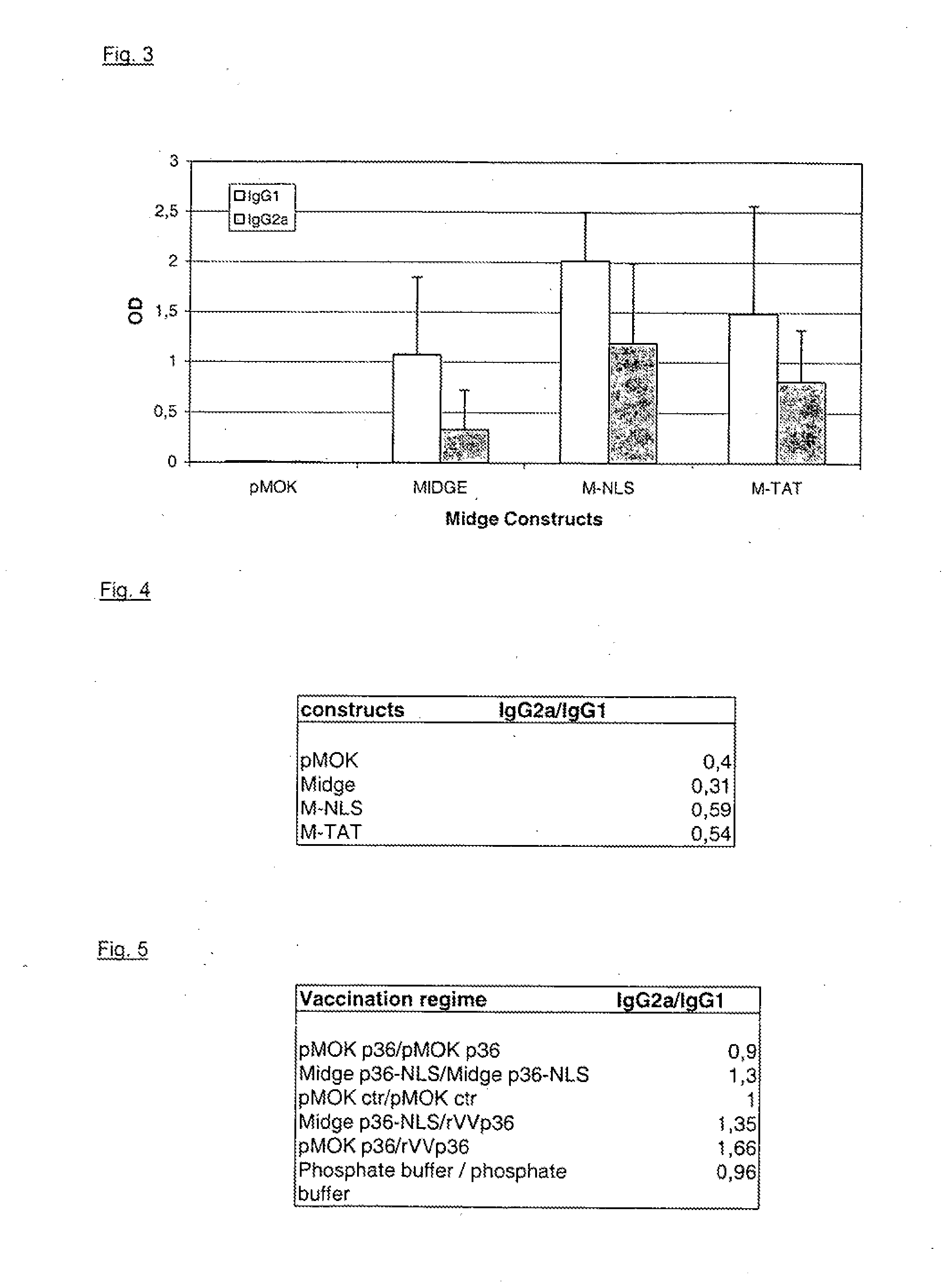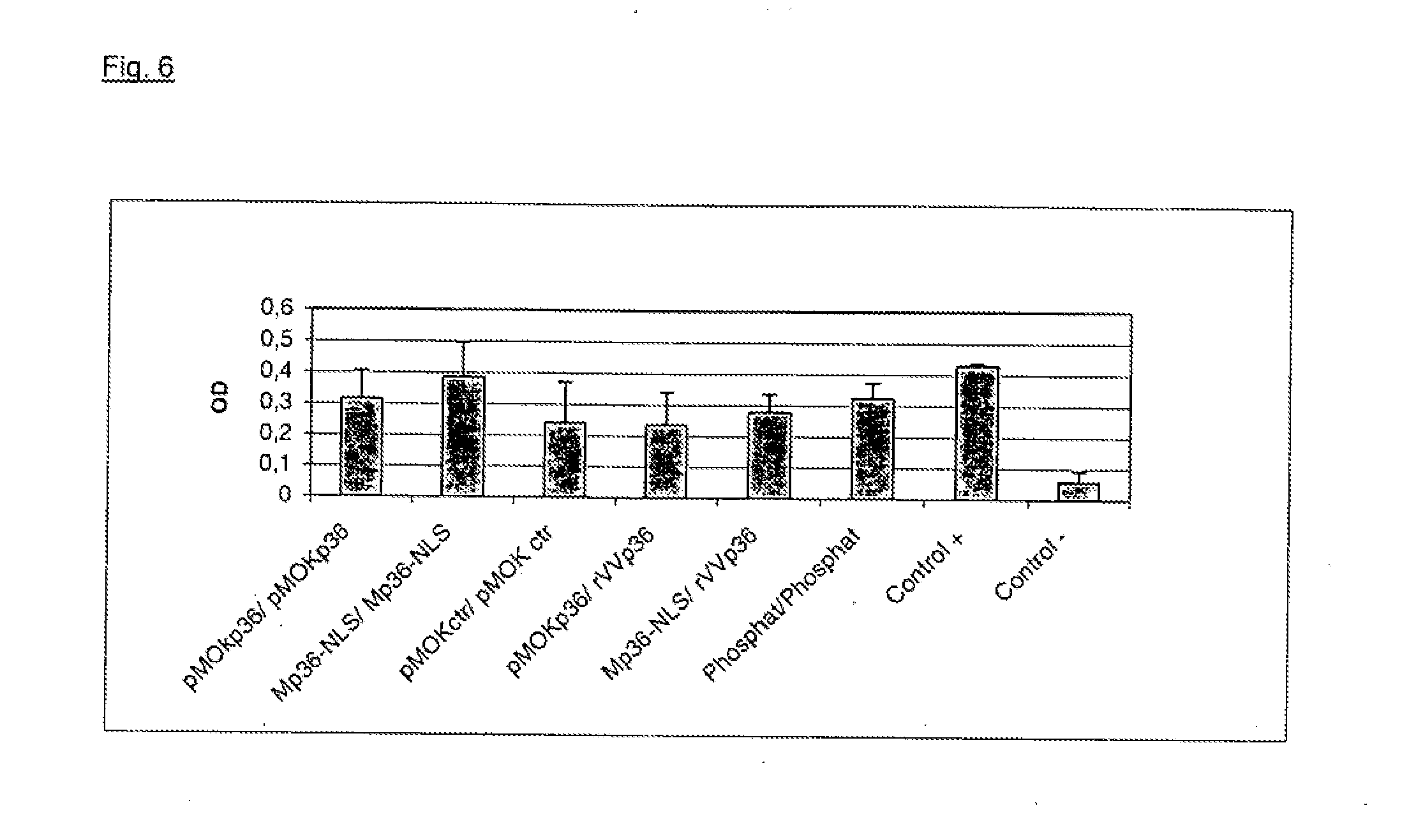Means for Eliciting an Immune Response and a Method Transfer
a technology of immune response and method, applied in the field of immune response elicitation and method transfer, can solve the problems of reducing affecting the commercial use of the vaccinated site, and affecting the efficacy and specificity of the transfection in cell types and tissues, so as to improve the effect of gene transfer and reduce the value of the vaccinated animal
- Summary
- Abstract
- Description
- Claims
- Application Information
AI Technical Summary
Benefits of technology
Problems solved by technology
Method used
Image
Examples
experimental example 1
Determination of HBsAg Antibody in Mice
[0070]According to example 4, MIDGE encoding the hepatitis B surface antigen (subtype ay) were produced. Proof of the expression of the encoded antigen was performed by antibody titre determination against hepatitis B antigen by means of ELISA. The production of MIDGE was performed according to example 4. In particular, unmodified MIDGE and MIDGE with a ligand, specifically MIDGE-NLS and MIDGE-T, were produced. As an additional control, the plasmid pMOK HBsAg was used. As a negative control the sera of untreated mice were used.
[0071]MIDGE (unmodified as well as NLS-modified) and plasmid were dissolved in sodium phosphate pH 7.2 in a volume of 50 μl and injected into Balb / c mice intradermally. DNA amounts used were 10 μg and 1 μg per animal and per vaccination, respectively. 5 animals were used per group. After 11 weeks, a secondary immunization (boost) was performed. Determination of antibody from sera was performed at week 2, 4 and 8. The resu...
example 2
Vaccination Trial Against the Leishmania p36 Antigen
[0072]In order to elicit an effective protection by vaccination against leishmania major, the 36 kDa antigen, also referred to as LACK, was used. In the vaccination trial, different gene shuttles were employed that all encoded the immunogenic p36 antigen: MIDGE with NLS attachment, plasmid pMOKp36 and recombinant vaccinia virus p36 (rVV). In order to obtain a comparison to the most effective prime / boost vaccination, constructs were injected into female mice (Balb / c) according to the following scheme:
5 primary Secondary immunization group immunization. (boost) 1 pMOKp36 pMOKp36 2 p36-NLS MIDGE p36-NLS 3 pMOK control pMOK control 4 pMOK p36 rVVp36 5 MIDGE p36-NLS rVVp36 7 phosphate buffer phosphate buffer
[0073]10 mice were used per group.
[0074]Amounts of DNA were:
[0075]pMOK p36: 100 μg, i.d.
[0076]MIDGE p36-NLS: 54.8 μg, i.d.
[0077]rVV p36: 5×107 pfu / animal, i.p.
[0078]and were applied dissolved in sodium phosphate buffer at pH 7.2.
[007...
PUM
| Property | Measurement | Unit |
|---|---|---|
| pH | aaaaa | aaaaa |
| pH | aaaaa | aaaaa |
| flow rate | aaaaa | aaaaa |
Abstract
Description
Claims
Application Information
 Login to View More
Login to View More - R&D
- Intellectual Property
- Life Sciences
- Materials
- Tech Scout
- Unparalleled Data Quality
- Higher Quality Content
- 60% Fewer Hallucinations
Browse by: Latest US Patents, China's latest patents, Technical Efficacy Thesaurus, Application Domain, Technology Topic, Popular Technical Reports.
© 2025 PatSnap. All rights reserved.Legal|Privacy policy|Modern Slavery Act Transparency Statement|Sitemap|About US| Contact US: help@patsnap.com



